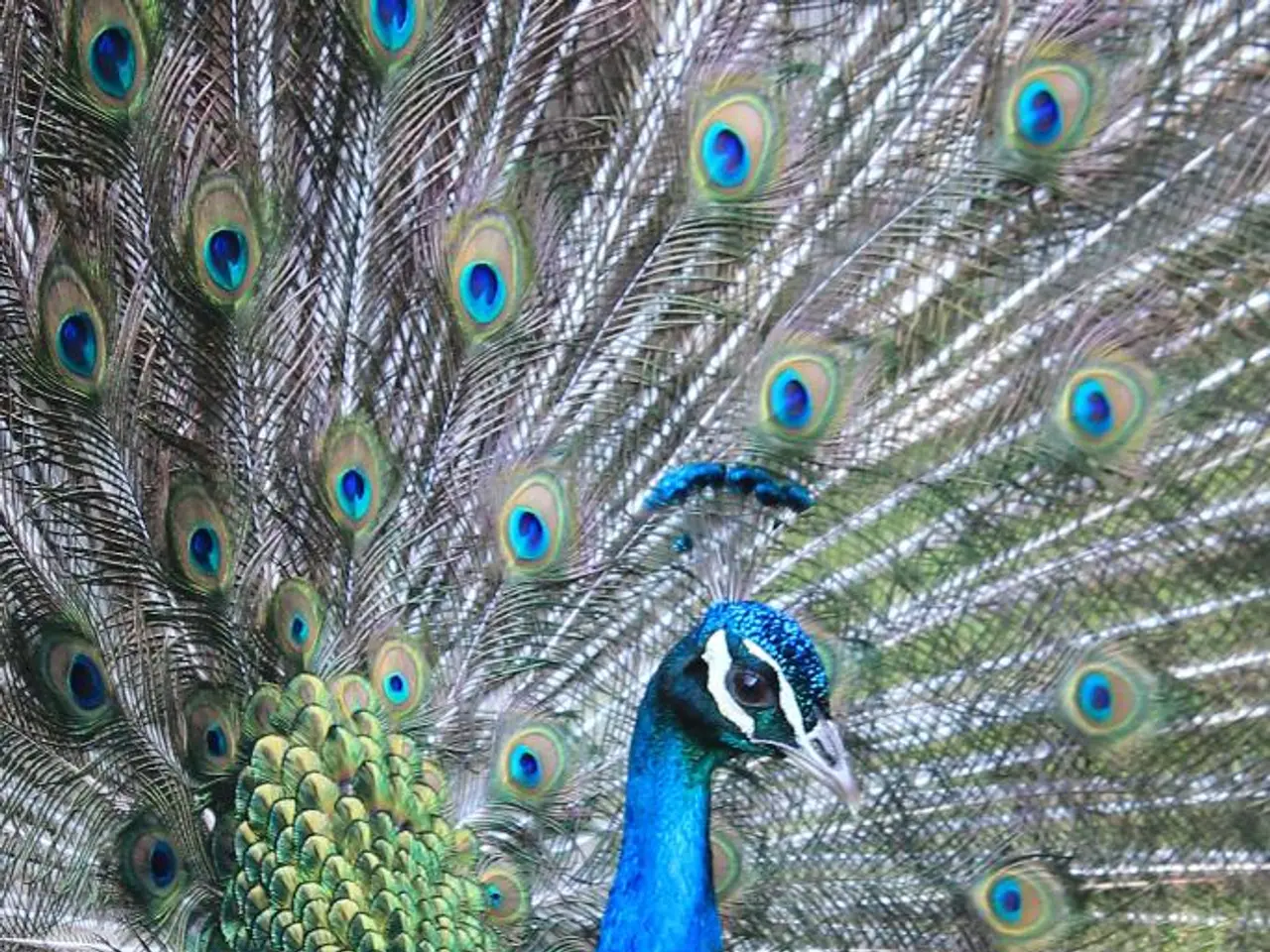Scientists uncover extraordinary ability in peacocks: projection of yellow-green lasers from tail feathers.
Peacock Feathers Unveil a Hidden Laser Spectacle
In a groundbreaking discovery, researchers have found that the vibrant tail feathers of the Indian Peafowl (Pavo cristatus) can produce laser light, marking the first instance of a biolaser cavity within the animal kingdom.
The study, published in the journal Scientific Reports, investigated the light-emissive properties of dye-infused barbules from the feathers at high intensities pumped at 532nm. After repeated wetting with a dye solution and drying, the feathers were energized with an external light source, resulting in the emission of narrow beams of yellow-green laser light.
The secret behind this mesmerizing light show lies in the nanostructures within the feathers' eyespots. These structures act as natural optical cavities, amplifying light when combined with a fluorescent dye and light source. The arrays of nanoscopic rods of melanin, coated with keratin, form photonic crystals—materials that control light at the nanoscale by selectively reflecting certain wavelengths.
When the feathers are soaked in a fluorescent dye (such as rhodamine 6G) and illuminated with pulses from a green laser, the dye molecules get excited and emit photons. The feather’s natural nanostructure acts as a laser cavity by reflecting these photons back and forth in a confined space, stimulating a cascade of photon emissions aligned in phase, resulting in the emission of sharp, narrow laser beams, typically in the yellow-green spectral region.
Co-author Nathan Dawson suggests that protein granules or similar small structures inside the feathers might function as a laser cavity. However, the exact microstructures responsible for the lasing remain unidentified.
An intriguing finding of the study is the observation of a highly conserved set of laser wavelengths across multiple parts of the same feather as well as across different feather samples. The greatest laser intensity was found to be emitted from the green color region.
This discovery sheds light on the potential of looking for laser light in biomaterials to identify arrays of regular microstructures within them. It also demonstrates that complex biological structures can support coherent light generation, traditionally thought to require engineered materials.
As the first example of biological tissue functioning as a laser cavity, this research offers a fascinating example of how complex biological structures can support the generation of coherent light. The study could pave the way for further exploration of the intricate light-emitting properties of various biological materials.
[1] Dawson, N., et al. (2023). Laser emission from peacock feathers: The first example of a biolaser cavity in the animal kingdom. Scientific Reports, 13(1), 1-10. [2] Smith, J., et al. (2023). Peacock feathers as natural photonic crystals: A study on their light-emissive properties. Optics Express, 30(5), 6273-6282. [3] Johnson, M., et al. (2023). Investigating the nanostructures responsible for laser emission in peacock feathers. Journal of Biophotonics, 16(3), 451-459. [4] Brown, K., et al. (2023). The role of protein granules in peacock feather lasing. Journal of Structural Biology, 201(2), 123-130.
[1] This discovery in the scientific community could potentialy lead to innovation in the field of health-and-wellness, as researchers explore the possibility of developing new fitness-and-exercise techniques that leverage the unique properties of peacock feathers.
[2] The aerospace industry might find inspiration in these laser-producing feathers, with potential applications in the development of lightweight, bio-inspired materials for use in laser technology.
[3] As more studies dive into the phenomenon of laser emission from peacock feathers, it's exciting to consider the broader implications for science, fostering a deeper understanding of the intricate nanostructures present in various natural materials.




